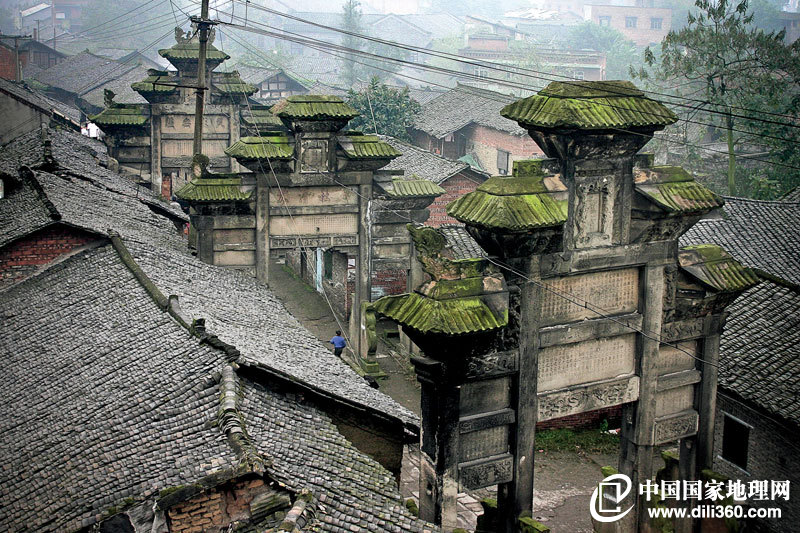 |
|
There is a saying that goes, “Wherever there are residents, there are archways.” According to records, there were more than 70 memorial archways in the history of Longchang county in Sichuan province. People even had archways for both men and women since there were too many people commended. The archway on the right is for the chaste and faithful widows and has on it 164 names, 163 of which are the names of women. The name of the filial son, Peng Guangren, is listed on the side slab. Photo: Xie Ping [Photo from Chinese Heritage]
|
While biaolū, as a horizontal beam, is used for commending good deeds; fayue, with two vertical pillars is used to record achievements. When the two structures are put together, the basic framework of a memorial archway is created. Is this the complete evolutionary process of memorial archways? We may come across new discoveries by taking a second look at the residential system that originated from the lūli system.
On the basis of the lūli system from the Zhou Dynasty, the Han Dynasty developed a lifang system which divided cities into squares of all sizes. Every square named fang was surrounded by walls with a cross road at the center and four gates in four directions. Over the two pillars of the gate hung a horizontal board bearing the name of fang so as to signify the division of space. In this way, every fang was a relatively independent closed system, which made it much easier for the government to maintain social stability and security. During the Sui and Tang Dynasties, the lifang system peaked. To take Changan City of the Tang Dynasty as an example, apart from the imperial city, the whole city was divided up into 108 fangs, presenting a spectacular view of order and prosperity. In addition to dividing space, fang also separated different kinds of residents.
We recommend:
